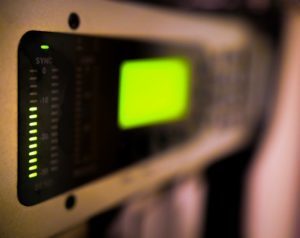While there are many elements to producing great voice overs, few are as important as the room you produce them in. While it is important to carefully evaluate the sound of your room when it is completed, there are some basic things to consider in the beginning that will help ensure your space will sound great in the end. Here are some quick tips on choosing and creating your VO space.
Location
The space you choose should be a quiet place. Basements can be a good choice because they are often underground. Upper levels can also be a good choice because they are free from noise overhead. Spaces in your home farthest away from roads or other sources of outside noise are ideal. Begin by picking the right location based on what is available to you, and you will be off to a good start.
Size
You need a space that is comfortable and capable of containing you and your equipment. At a minimum you need room for yourself, a microphone, microphone stand and a copy stand and/or computer monitor. You may also wish to have a chair and some of your equipment in the space with you (the quiet pieces only please).
Dimensions
It is important to consider the dimensions of your room. Because of the way sound travels, square rooms are bad. Ideally the dimensions will be different or not evenly divisible by one another.
Sound Proofing
In a home studio setup, it can be difficult to completely keep outside sounds from entering your recording space. This is why choosing the best location is critical. If you are building your space, you’ll want to isolate it as much as possible by separating it from the rest of your structure. Using double thick walls, creating air-gaps between walls and floating the floor are commonly used methods. Think of it as building a room within a room. If you are simply creating a space or using a prefabricated “voice booth”, keep it way from noisy household equipment and keep all of your noisy studio gear (anything with a running fan) outside of the room and away from the voicing area.
Acoustic Treatment
Treating the acoustics within your space is the final step. There are many products on the market that can help you with this or you can create your own. Acoustic foam panels of various sizes, thicknesses and shapes are just one of several options (panels made from mineral wool fiber covered in burlap are my personal choice.) Whether you are using pre-cut foam, buying other acoustic control materials or creating your own acoustic panels, the thickness of the panels determines what frequencies they work best to control. To tame bass or low frequencies you need thick panels, usually no less than 6 inches thick. For mid range and higher frequencies 2 and 3 inch thick panels will usually do the job. Absorbent materials and varied surfaces (such as pyramid or triangle shapes on foam) help to reduce reflections that cause a room to sound reverberant.
Location, size, dimensions, soundproofing and acoustic treatment are the fundamental considerations. This article is meant to get you thinking about these elements as you work on your voiceover recording space. For more in-depth information about room acoustics and sound treatment you can check out the ProComm Voices Talent Help pages and this article on home voice over studio room acoustics. I also recommend the following links:
For more information about sound and how it relates to your voiceover career check out: Sound Advice – Voiceover From An Audio Engineer’s Perspective.
It is important to understand that effective sound control requires that you utilize space and use materials that have mass. While there are several products available that wrap around your microphone or even you and your microphone, none of these are as effective as treating the room you are in properly. If you are serious about your career in voiceover you will get serious about your room. Other than your voice, nothing is more important to your sound than your recording environment.



